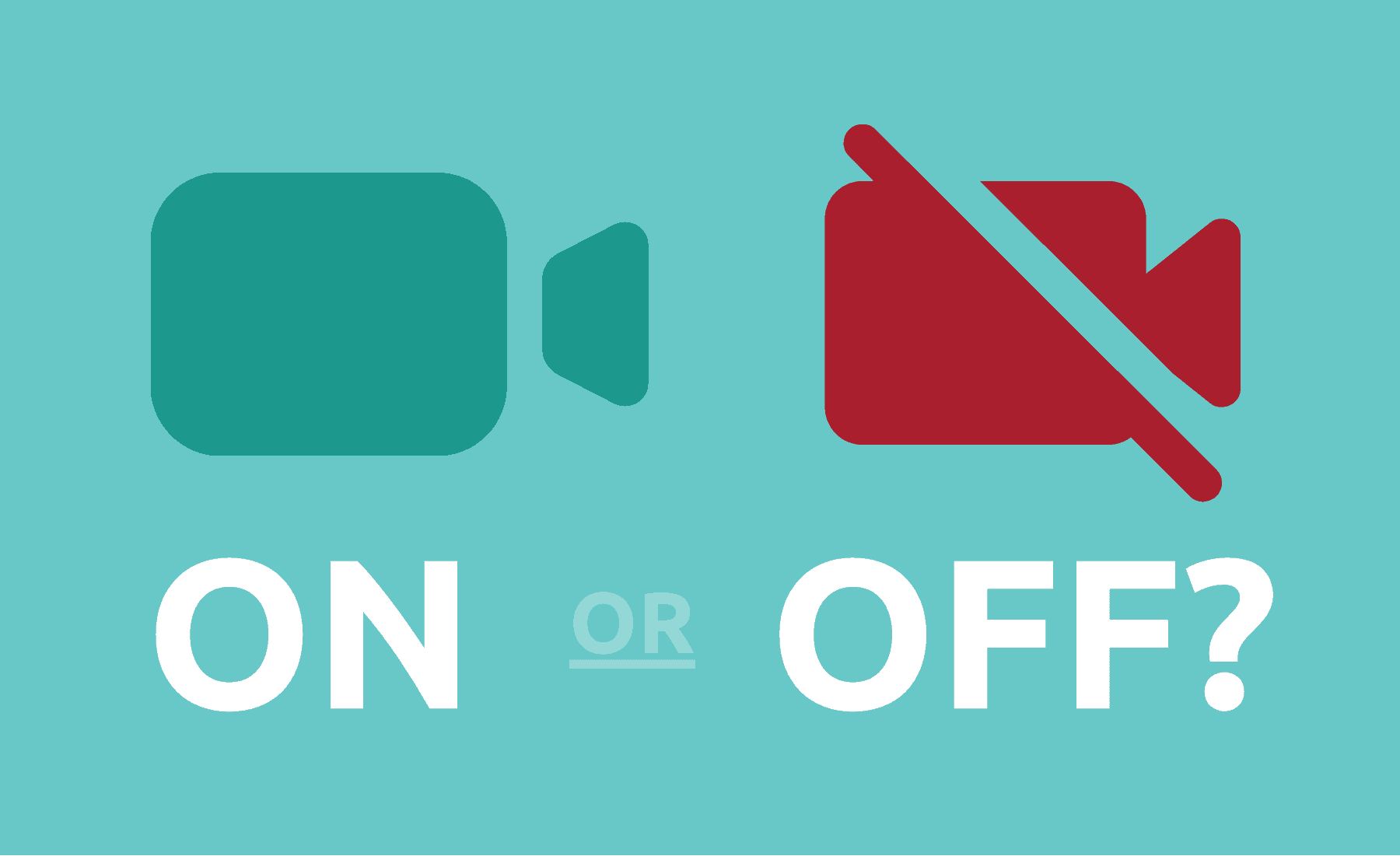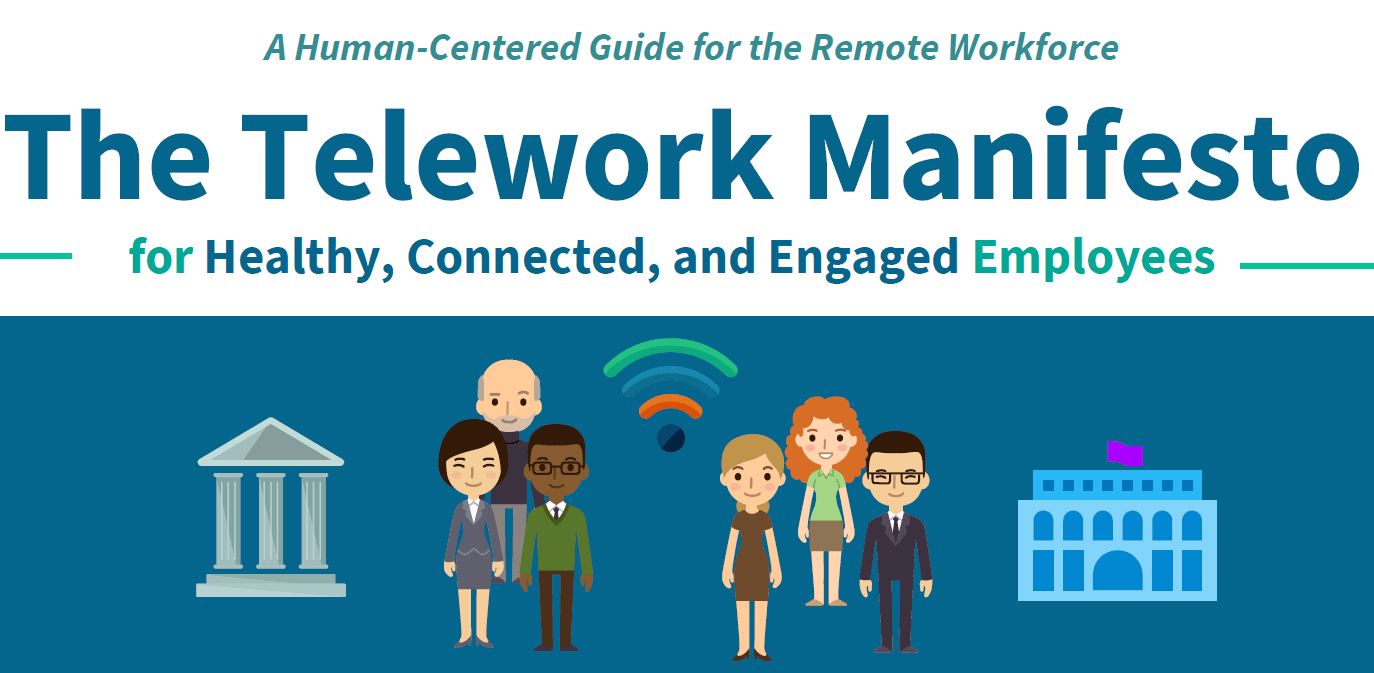Camera On or Camera Off? That is the Question.

You are scheduled for a presentation-style virtual meeting with 20+ attendees. Or perhaps you are experiencing Zoom fatigue after attending back-to-back virtual meetings. Whatever the situation, we have all contemplated, at some point, whether to turn the camera on or leave it off.
The camera-on vs. camera-off debate recently hit a new peak. Supporters of the camera-on approach insist that it builds relationships and trust. Opponents say that always being on camera is taxing, stressful, and unnecessary. There are some strong feelings on either side of this discussion.
Do the benefits of having your camera on in a remote meeting outweigh the drawbacks? Let’s explore each side.
Camera On: Fostering Connection
The more video meetings we have, the more having your camera on becomes expected. By now, we have all experienced entering a meeting with our camera off only to be greeted by a sea of faces. Most of us quickly turn our cameras on in response.
- Many people consider turning the camera on the polite thing to do. After all, others cannot see your expressions and other nonverbal cues if your camera is off.
- Leaving the camera off might create an impression that you do not plan to be engaged in the meeting or do not care whether people know you are engaged.
- Some people find it especially rude to keep your camera off when others have theirs on. This lack of reciprocation can breed distrust.
- Asking for cameras on may keep team members from multi-tasking in video meetings.
- Some argue that right now is the most critical time in history for camera-on interactions. Communication and visibility are considerably important in a world coping with social distancing.
Since many of us work from home, most people forgive casual wear in remote meetings. It is hard to use the excuse of “I do not look professional enough” when we’ve all relaxed our business attire. And who doesn’t have a “Zoom shirt” nearby to throw on for meetings?
Camera Off: Respecting Boundaries
Despite the camera-on crowd’s enthusiasm, video fails such as pants-less reporting, kitten filters, and broadcasted bathroom trips demonstrate that virtual meetings are not without their own perils.
Aside from the occasional on-camera blunder, there are other compelling reasons to keep the camera off. One of the biggest reasons is that being on camera is a considerable contributing factor to virtual meeting fatigue. Virtual meeting fatigue can be caused by:
- Excessive close-up eye gaze. With in-person meetings, an attendee only holds the visual attention of the room if they are speaking. In a virtual meeting, on-camera attendees often look at and feel looked at by a whole grid of faces for the entire meeting. It’s an intense, taxing experience for our brains that can lead to over-stimulation.
- Cognitive load. From technical difficulties to monitoring nonverbal cues from everyone in a meeting, our brains work harder on camera. We are centering ourselves in the camera’s field of view, exaggerating nods to ensure they are seen or looking at the camera instead of the screen to imitate eye contact.
- Increased self-evaluation. Seeing ourselves in a mirror or self-view video feed triggers self-evaluation. Self-evaluation for extended periods can become quite stressful. We end up over-analyzing our appearance, expression, background, lighting, and other visual elements. It is easy to focus on ourselves more than the meeting.
- Constraints on physical mobility. Finally, being on camera requires sitting still, usually in a small field of vision. The effect can discourage stretching, leaning, and turning in ways that would be normal in person. We cannot fidget in the innocuous ways people do in meetings without drawing attention.
Video conferencing software can only provide a partial solution
One solution provided by video conference software (e.g., Zoom, MSTeams) allows for a “speaker view” or “hide self-view” to alleviate some of these issues. However, there are other considerations for turning the camera off.
- People working from home deserve privacy and boundaries between work and personal life, and they may not want their supervisor to see their bedroom.
- For a variety of reasons, being on camera can make it more difficult for some people to do their best work.
- It can be a big ask to pressure people to look professional, present a clean background, and share their personal space digitally with co-workers while working from home during a pandemic.
A Possible Middle Ground?
In the camera debate, perhaps there is a middle ground to be considered. Here are some guidelines that we found helpful in evaluating whether to turn the camera on or off.
Turn your camera on if:
- You are leading the meeting or presenting.
- It is important to demonstrate that you are paying attention.
- You are meeting people for the first time who you will likely work with again.
- You feel great about how you look and are excited to engage.
- The room you are in is presentable and relatively distraction-free.
Turn your camera off if:
- You do not expect to speak much.
- The meeting format is not focused on individual participation.
- You have established rapport with all or most of the people in the meeting.
- You need a break from the camera.
- The room you are in has other activities or conversations that may distract the meeting.
Remember, using speaker view and hiding self-view can alleviate some of the problems that cause Zoom fatigue regardless of whether your camera is on or off.
If your camera is off, do not feel guilty about it. Exercising boundaries while working from home is a good thing! And if your camera is on, well, try not to forget about it and give us another video conference fail to laugh at.
Evans Consulting wanted to look into the Camera On/Camera Off debate further so we conducted a poll on LinkedIn. Read about the results here.
References
- Castelli, Frank R. Sarvary Mark A. “Why students do not turn on their video cameras during online classes and an equitable and inclusive plan to encourage them to do so.” January 10, 2021.
- Terada, Youki. “The Camera-on/Camara-Off Dilemma.“ February 5, 2021.
- Wache, Vanessa. “Women, don’t turn your camera off for Zoom calls.” November 19, 2020.



